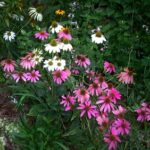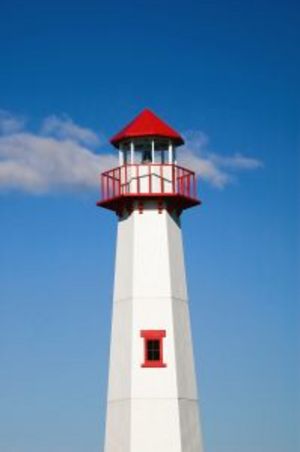Gerbera daisies are classically lovely flowers that can bloom all summer. The twelve inch tall plants grow in small clumps with six inch long leaves and stems that bear a single large bloom and show color for two or three weeks.
Gerberas have large, long lasting flowers.
As the clumps gradually increase in size, it can produce several flowers at once. Geberas make great cut flowers and are used in florist bouquets. Colors include a rich red as well as yellow, orange, peach, pink, and white.
Gardeners usually buy gerbera daisies from garden centers in the spring. They come in pots from four inches in size on up. Geberas can be grown from seed but take quite a while to germinate and grow large enough to bloom. It takes several plants to fill a twelve-inch container or hanging pot.
Plant gerbera daisy along the front of the flowerbed about a foot apart. Sunny mornings and shady afternoons are the best growing conditions. They grow best in rich, well drained soil. Mulch will help keep the plant from drying out.
They are perennials in warm climates.
Gerbera daisies can be grown as perennials in climates where temperatures do no drop below 25 degrees Fahrenheit. Freezes will kill the foliage above ground, but the thick, tuberous root that grows a couple of inches deep can still survive if the ground does not freeze. The plants can be brought inside through the winter months and will keep growing if placed in a sunny location.
When the clumps get big enough to have more than one crown producing new leaves, they can be divided into two clumps. Dig up the plant with all the roots and wash off some of soil from the thick main root, which grows parallel to the surface. Cut the tuberous root with a knife between the clumps, making sure they both have some fibrous roots to nourish them. Replant immediately at the same depth, spreading out the roots and keep well watered.
Geberas sometimes wilt just after transplanting due to transplant shock. Keep it watered and place a leafy twig next to it to shade it for a few days. Wilting on hot afternoons is not too unusual. They usually recover as soon as the temperature drops.
Slugs and ahids sometimes eat the plants, but one of the main pests are leaf miners, very tiny insects that eat their way though the center of the foliage, leaving trails. Leaf miners are usually not fatal to the plant, and are best treated by removing and discarding the infected leaves. The worst disease for gerbera daisies is powdery mildew caused a fungus that causes the leaves to turn grayish white. Treatment is difficult so immediately remove all affected plants.
Gerbera daisy is a native of South Africa and has the scientific name Gebera jamisoni. Other names used include Transvaal daisy and gerber daisy.





